1. Development of multi-vendor e-commerce apps
Using multi-vendor e-commerce app development company , businesses may establish platforms where numerous vendors can display their items and provide purchasers with a range of alternatives. These applications facilitate the efficient processing of transactions, product management, and vendor onboarding. A custom-developed multi-vendor app meets industry demands, ensuring a smooth experience for customers and suppliers.
Investing in the creation of multi-vendor e-commerce apps may improve scalability and propel business expansion. These systems give companies wishing to launch an online marketplace a competitive edge thanks to features like order monitoring, vendor management, and safe payment channels.
Key Features :
- Personalized vendor onboarding procedure
- Flexible and safe payment integrations
- Future-proof and scalable platform
- The design is user-friendly for both buyers and sellers
- A sophisticated system for managing orders and products is in place
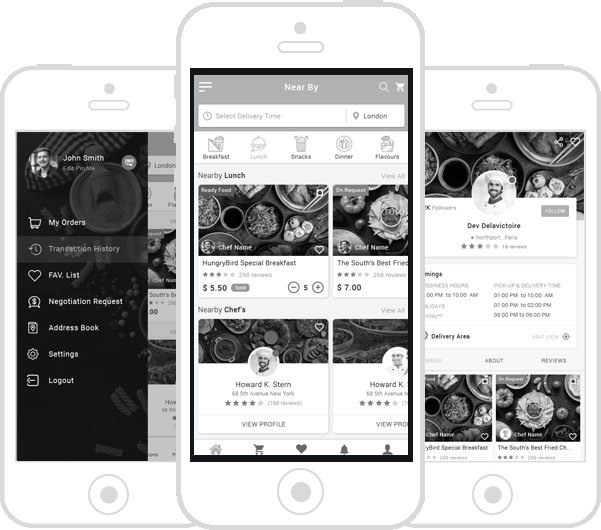

2. An app for multiple vendor marketplaces
Businesses may develop a digital marketplace where many vendors can sell their items by using multi-vendor marketplace software. These platforms offer a multitude of choices to consumers, hence enhancing customer contentment and loyalty. Companies can effectively handle each vendor's inventory and payments while managing multiple vendors in one application.
Businesses can assist various vendors in accessing a larger client base by providing a multi-vendor marketplace app that acts as a central hub for them. This technology enables merchants to autonomously manage their items while guaranteeing safe and seamless transactions.
Key Features :
- Dashboard for centralized vendor management
- Simple changes for vendors' product catalogs
- A safe and secure consumer transaction method
- Many product options at one location
- Multiple-level revenue and commission management
3. Innovative applications for multi-vendor e-commerce
Companies and sectors create tailored multi-vendor e-commerce applications to meet their unique needs. These applications provide customized features, including one-of-a-kind vendor dashboards, individualized purchasing journeys, and specially designed payment options. Businesses may easily integrate features that match their branding and operating procedures with a tailored solution.
In addition to increasing platform efficiency, a well-designed bespoke multi-vendor e-commerce software improves the user experience by making it simpler for vendors to manage their storefronts and for customers to browse through a variety of items. This leads to higher conversion rates and consumer satisfaction.
Key Features :
- Dashboards for individual vendors
- Personalized retail encounters
- Customized payment methods and gateways
- Combining current business systems with integration
- Improved tools for vendor-buyer communication


4. An online shopping portal with multiple vendors
Customers may choose from a large selection of items offered by several merchants on one platform thanks to multi-vendor e-commerce. Businesses can effectively operate a marketplace by providing tools for vendor registration, product listing, and order fulfillment. These platforms are perfect for companies who want to expand their product line without having to handle inventories directly.
A strong multi-vendor e-commerce app development company governance while promoting vendor autonomy. With a single system, vendors can track orders, control inventory, and respond to consumer inquiries, streamlining the process for all parties.
Key Features :
- Streamlined registration procedures for vendors
- For suppliers, independent product management
- Sophisticated analytics to provide business information
- Several possibilities for delivery and shipment
- Dependable and safe payment method
5. Solutions for multi-seller e-commerce apps
Using multi-seller e-commerce software solutions, businesses can create online marketplaces that serve numerous suppliers. These systems come with capabilities that allow for effective order management, supplier analytics, and consumer engagement, all while ensuring a seamless and enjoyable shopping experience. Custom solutions offer flexibility to match the specific requirements of each marketplace.
Companies may increase their online market reach and improve vendor and customer relationships by adopting these solutions. This integrated approach allows businesses to efficiently handle various vendors while maintaining a high-quality user experience.
Key Features :
- Analytics for vendor performance
- Tools for smooth order processing
- Options for integrating third-party applications
- Customizable interface and functionality
- Support for multiple payment gateways


6. Customizable e-commerce marketplace apps
Customizable e-commerce marketplace apps allow businesses to tailor features and functionality according to their specific needs. These apps enable businesses to design unique user experiences, integrate preferred payment gateways, and adapt to their specific industry requirements. Customization ensures that the app aligns with business goals and enhances operational efficiency.
With customizable options, businesses can address specific market needs and provide a unique selling proposition in the competitive e-commerce space. This adaptability helps in offering a superior user experience and meeting unique business requirements.
Key Features :
- Customizable design and layout
- Integration with preferred third-party services
- Scalable architecture for future growth
- Tailored user experience and navigation
- Advanced reporting and analytics features
7. Multi-supplier marketplace applications
Multi-supplier marketplace applications create a robust ecosystem where various suppliers can offer their products to a shared customer base. These platforms are designed to accommodate diverse suppliers and provide seamless integration for managing inventory, processing orders, and tracking performance.
By incorporating multi-supplier functionality, businesses can enhance their product offerings and expand their market reach. Such applications streamline supplier interactions and ensure a cohesive shopping experience for users.
Key Features :
- Supplier management and onboarding tools
- Integrated inventory and order processing
- Performance tracking and analytics
- Customizable product listings and categories
- Flexible payment and shipping options


8. Advanced multi-vendor e-commerce systems
Advanced multi-vendor e-commerce systems offer sophisticated functionalities to manage a wide range of vendors and products. These systems provide comprehensive tools for vendor management, customer engagement, and sales tracking. They are designed to handle complex interactions and large volumes of transactions seamlessly.
By leveraging advanced multi-vendor systems, businesses can optimize their marketplace operations, improve vendor relationships, and enhance the overall shopping experience. These systems are scalable and can be customized to meet evolving business needs.
Key Features :
- Comprehensive vendor management tools
- Advanced sales tracking and reporting
- Integration with various third-party services
- Scalable architecture for growth
- Enhanced customer engagement features
9. Tailored solutions for e-commerce marketplaces
Tailored solutions for e-commerce marketplaces offer personalized features and functionalities to suit the unique needs of businesses. These solutions allow for customization of various aspects of the marketplace, including vendor management, product listings, and payment processing. Businesses can create a unique platform that aligns with their specific requirements and goals.
Customized e-commerce solutions help businesses stand out in a competitive market by providing a distinctive user experience and addressing specific operational needs. These solutions offer flexibility and scalability to adapt to changing market conditions.
Key Features :
- Customizable marketplace features
- Flexible vendor and product management
- Adaptable payment and shipping options
- Integration with existing business systems
- Scalable and future-proof design


10. Flexible multi-vendor app solutions
Flexible multi-vendor app solutions provide businesses with the adaptability to create and manage a diverse range of vendor relationships. These solutions allow for customization and scalability, enabling businesses to meet their specific requirements and adapt to changing market conditions. Features like dynamic product listings, flexible payment options, and vendor management tools enhance the overall functionality of the app.
By adopting flexible multi-vendor app solutions, businesses can improve their marketplace operations, foster stronger vendor relationships, and provide a more tailored user experience. These solutions ensure that businesses can effectively manage their growing marketplace needs.
Key Features :
- Adaptable vendor management systems
- Customizable product and payment options
- Scalable and flexible platform architecture
- Integration with various third-party services
- Advanced reporting and analytics tools
List Of Multi-Vendor E-commerce Apps
| App Type | Features |
|---|---|
| Vendor Dashboard App |
|
| Customer Marketplace App |
|
| Admin Panel App |
|
| Payment Gateway Integration App |
|
| Order Management App |
|
Users/Sellers Screens For Multi-Vendor E-commerce Apps
| Screen | Features | Explanation |
|---|---|---|
| Login/Signup Screen |
|
Allows users and sellers to log in or sign up. Provides options for password recovery and social media logins. |
| Dashboard |
|
Displays a summary of important information and provides quick access to various app functionalities. |
| Profile Management |
|
Allows users and sellers to manage their profiles, update personal and business information, and change their password. |
| Product Listings |
|
Enables sellers to add, edit, and delete products from their inventory and view performance metrics for their listings. |
| Order Management |
|
Provides functionality to view and manage orders, including updating statuses and handling returns and refunds. |
| Analytics and Reports |
|
Offers insights into sales and performance metrics, helping users and sellers track their progress and make data-driven decisions. |
| Notifications |
|
Displays notifications related to orders, system alerts, and important updates. Allows users to manage their notification settings. |
| Help and Support |
|
Provides users with access to support resources, the ability to submit and track support tickets, and contact customer support. |
| Settings |
|
Allows users to configure their app settings, including notifications, payment methods, and other preferences. |
| Logout |
|
Provides a means for users to securely log out of their account and be redirected to the login screen. |
Buyers Screens For Multi-Vendor E-commerce Apps
| Screen | Features | Explanation |
|---|---|---|
| Login/Signup Screen |
|
Allows buyers to log in or sign up for an account. Provides options for password recovery and social media logins. |
| Home Screen |
|
Displays an overview of featured products, promotions, and categories. Allows buyers to search for products and view recommendations. |
| Product Search and Filter |
|
Enables buyers to search for specific products and apply filters and sorting options to refine their search results. |
| Product Details |
|
Provides detailed information about a product, including images, description, price, availability, reviews, and purchase options. |
| Shopping Cart |
|
Displays the products added to the cart, allows updates to quantities, removal of items, and provides a summary of the total cost and shipping estimates. |
| Checkout Screen |
|
Allows buyers to enter shipping details, select a payment method, review their order, and complete the purchase. |
| Order History |
|
Provides access to previous orders, allows tracking of order statuses, reordering of items, and viewing order details and receipts. |
| Wishlist |
|
Allows buyers to add products to a wishlist, view and manage wishlist items, and move desired items to the cart for purchase. |
| Notifications |
|
Displays notifications related to order updates, promotions, and system alerts, keeping buyers informed about important events. |
| Profile Management |
|
Allows buyers to manage their profile, update personal information, change passwords, and manage shipping addresses. |
AdminPanel Screens For Multi-Vendor E-commerce Apps
| Screen | Features | Explanation |
|---|---|---|
| Dashboard |
|
Provides a summary of important metrics, including sales data, order statuses, and user activity. Includes charts and quick links for easy navigation. |
| Vendor Management |
|
Allows admins to manage vendor accounts, including approval processes, performance tracking, and profile management. |
| Product Management |
|
Enables admins to handle product listings, including adding new items, editing existing products, managing categories, and monitoring inventory. |
| Order Management |
|
Provides tools to manage customer orders, update statuses, and process returns and refunds. |
| User Management |
|
Allows admins to manage user accounts, including updating roles, permissions, and monitoring user activity. |
| Reports and Analytics |
|
Provides reporting tools for generating detailed sales, revenue, and performance reports, including the ability to analyze data and export reports. |
| Settings |
|
Enables admins to configure site-wide settings, including payment methods, shipping options, and notification templates. |
| Content Management |
|
Allows admins to manage and update website content, including banners, static pages, promotional material, and blog posts. |
| Support and Help Desk |
|
Provides tools for managing customer support tickets, responding to inquiries, and tracking the resolution of support issues. |
| System Logs |
|
Enables admins to view and analyze system activity, security logs, and performance data to ensure smooth operation and security. |
Estimated Cost Breakdown For Multi-Vendor E-commerce Apps
| Cost Component | Description | Estimated Cost (USD) |
|---|---|---|
| Design and UI/UX | Includes wireframes, mockups, and user experience design. Essential for creating an intuitive and engaging interface. | $5,000 - $15,000 |
| Backend Development | Development of server-side functionalities, database management, and integration of APIs. | $10,000 - $25,000 |
| Frontend Development | Implementation of the client-side application, including user interface and interaction. | $8,000 - $20,000 |
| Features and Functionality | Cost of adding features such as payment gateways, product management, vendor dashboards, and order processing. | $10,000 - $30,000 |
| Testing and Quality Assurance | Ensures the app is bug-free and functions well across different devices and platforms. | $2,000 - $5,000 |
| Maintenance and Support | Ongoing costs for app maintenance, updates, and support after launch. | $1,000 - $3,000 per year |
| Additional Costs | Includes third-party integrations, hosting services, and marketing expenses. | $2,000 - $10,000 |
Frequently Asked Questions (FAQs)
1. What is a Multi-Vendor E-commerce App?
A Multi-Vendor E-commerce App is a platform that allows multiple vendors or sellers to list and sell their products or services within a single application. It provides a centralized marketplace for buyers to browse and purchase from various vendors.
2. What are the main features of a Multi-Vendor E-commerce App?
Key features typically include vendor management, product listings, order processing, payment gateways, customer reviews, and analytics. The app may also offer features such as vendor dashboards and flexible shipping options.
3. How does vendor onboarding work in these apps?
Vendor onboarding usually involves a registration process where vendors provide their business details, upload product information, and configure payment and shipping settings. The app's admin reviews and approves the vendor’s application before they can start selling.
4. Can vendors manage their own inventory?
Yes, most multi-vendor e-commerce apps allow vendors to manage their own inventory. They can update product details, track stock levels, and handle product listings through their own vendor dashboard.
5. How are payments processed in Multi-Vendor E-commerce Apps?
Payments are typically processed through integrated payment gateways. The app handles the payment transactions securely and can disburse funds to vendors based on agreed commission structures or payment schedules.
6. Are Multi-Vendor E-commerce Apps scalable?
Yes, these apps are designed to be scalable. They can handle increasing numbers of vendors, products, and transactions as the business grows. Scalability is achieved through robust backend infrastructure and cloud-based solutions.
7. What types of products can be sold on these platforms?
Multi-vendor e-commerce platforms can support a wide range of products, including physical goods, digital products, and services. The type of products depends on the app’s niche and the vendors’ offerings.
8. How is customer support handled?
Customer support can be managed through various channels such as in-app messaging, email support, and live chat. Vendors and customers can reach out to support teams for assistance with orders, payments, or technical issues.
9. What security measures are in place for Multi-Vendor E-commerce Apps?
Security measures include SSL encryption for secure transactions, regular security audits, user authentication protocols, and secure payment gateways. These measures protect sensitive data and ensure safe transactions.
10. How can I track orders in a Multi-Vendor E-commerce App?
Order tracking is typically available through the app’s order management system. Both customers and vendors can track order statuses, view shipping updates, and receive notifications about order progress.
11. Can I integrate third-party services with these apps?
Yes, multi-vendor e-commerce apps can be integrated with third-party services such as payment gateways, shipping providers, and analytics tools. This enhances functionality and provides a better user experience.
12. How do I choose the right Multi-Vendor E-commerce App for my business?
Consider factors such as the app’s features, scalability, ease of use, customization options, and cost. Evaluate different platforms based on your business needs and ensure they align with your goals.
13. What is the typical cost of developing a Multi-Vendor E-commerce App?
The cost varies depending on the complexity of the app, features required, and development team. It typically ranges from $20,000 to $50,000 or more. Additional costs may include maintenance, updates, and marketing.
14. Can the app be customized to fit specific business needs?
Yes, multi-vendor e-commerce apps can be customized to meet specific business requirements. Customizations can include branding, unique features, and integration with existing systems.
15. How do I manage vendor commissions and payouts?
Vendor commissions and payouts are managed through the app’s admin panel. You can set commission rates, track sales, and automate payment disbursements based on the agreed terms.
16. Are there mobile versions of Multi-Vendor E-commerce Apps?
Yes, many multi-vendor e-commerce apps are available as mobile applications for both iOS and Android devices. This allows vendors and customers to access the platform on the go.
17. How do I ensure the app remains updated with new features?
Regular updates and maintenance are essential for keeping the app current with new features, security patches, and performance improvements. Work with a development team that offers ongoing support and updates.
18. Can users leave reviews and ratings for vendors?
Yes, most multi-vendor e-commerce apps include features for customer reviews and ratings. This helps build trust and provides feedback on vendor performance and product quality.
19. How do I handle disputes between vendors and customers?
Dispute resolution mechanisms are often built into the app, including customer support channels, mediation features, and clear policies for handling conflicts. Ensuring a fair and transparent process is crucial.
20. What kind of analytics and reporting tools are available?
Analytics and reporting tools provide insights into sales performance, customer behavior, and vendor activities. These tools help in making data-driven decisions and optimizing the app’s functionality.
Your choice of weapon
Build your Apps for any Platform
We to code. It's our passion



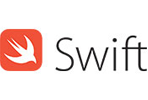
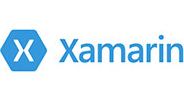
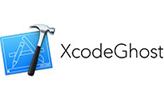


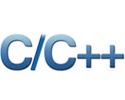

you can also reach us at our given
email address or phone number.







